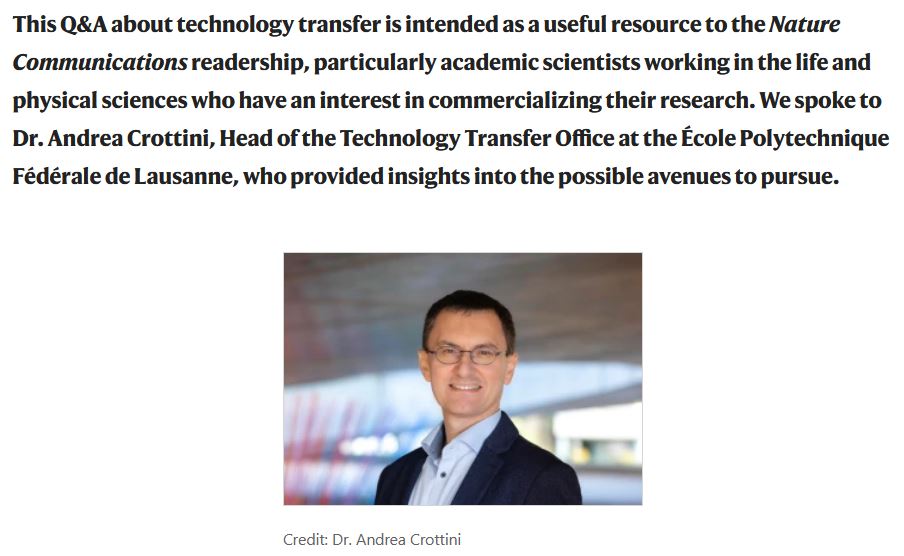Technology transfer has best practices but it is not so easy to read about them. The Technology Transfer Office (TTO) at Ecole Polytechnique de Lausanne (EPFL) had the great idea to publish how it manages the specific situation of startup creation. In March 2022, it published its New Guidelines for start-ups at EPFL. It is a very interesting document and I advise people curious about the topic to read it. “I wish I had it when I launched my start-up!” claims one of the EPFL entrepreneur. At the same time, the head of EPFL’S TTO was interviewed by Nature Communication and the document is worth reading too. Here is the link : A conversation on technology transfer. I will quote it at the end of the post.
Here are some data:
– For exclusive licenses, EPFL obtains either a number of shares equivalent to 10% of the start-up capital stock at incorporation, or a lower share of the capital stock that is undiluted until the start-up has received a certain amount of equity investment, e.g. 5% of capital share undiluted until the total accumulated investment reaches the amount of 5 MCHF, regardless of the value of the company.
– Royalties are applicable on sales and depend on the industry
Pharma 2–5%
Medtech 2–4%
Sensors, optics and robotics 1.5–3%
Environmental sciences & energy 1–3%
Computer and communication 1.5–3%
Semiconductors 1–3%
Software 1-25%
(this last % may be surprising and I assume it applies to licenses of fully usable software as a product)
– Exit : At the time of exit, EPFL will diligently consider any request of a start-up to transfer the licensed patents to an acquiring company that is committed and that has the capacity to further develop and commercialize the technology. The companies shall furnish the necessary business information to allow EPFL to understand the needs of such a transfer, and in the case of a royalty buyout to make a valuation of the licensed patents in terms of potential sales.
As promised some interesting elements from the interview. The words in bold are my choice.
“Contrary to what might be expected, the main factor is not necessarily the idea or technology itself, but people’s involvement. The actual and future commitment of the individuals involved in the commercialization of the technology is paramount, both on the academic and industrial sides. The commercialization of technologies is a long journey, from development, through de-risking, including prototyping and preliminary clinical validations, market analysis and industrialization, to the first sale. As no technology will find the path to commercialization by itself, long-term commitment is key.”
“Entrepreneurship is an effective way to increase the odds, by having a single actor transitioning and playing both roles. While this strategy requires a double commitment in terms of time and risk taking, it may lead to a higher potential reward for the researcher.”
“It’s certainly a positive development that PhD students and postdocs now have a third option to consider besides staying in academia or taking a job in industry — that of becoming an entrepreneur — and an increasing number of great examples of entrepreneurs and start-up role models exist.”
“If personal motivation and commitment to entrepreneurship are present, the start-up route is the way to go. It’s important to understand that many TTOs do not create start-ups. Researchers, as “founders”, do it.”
A big thank you to my dear former colleagues in Switzerland for mentioning this very much needed information.

